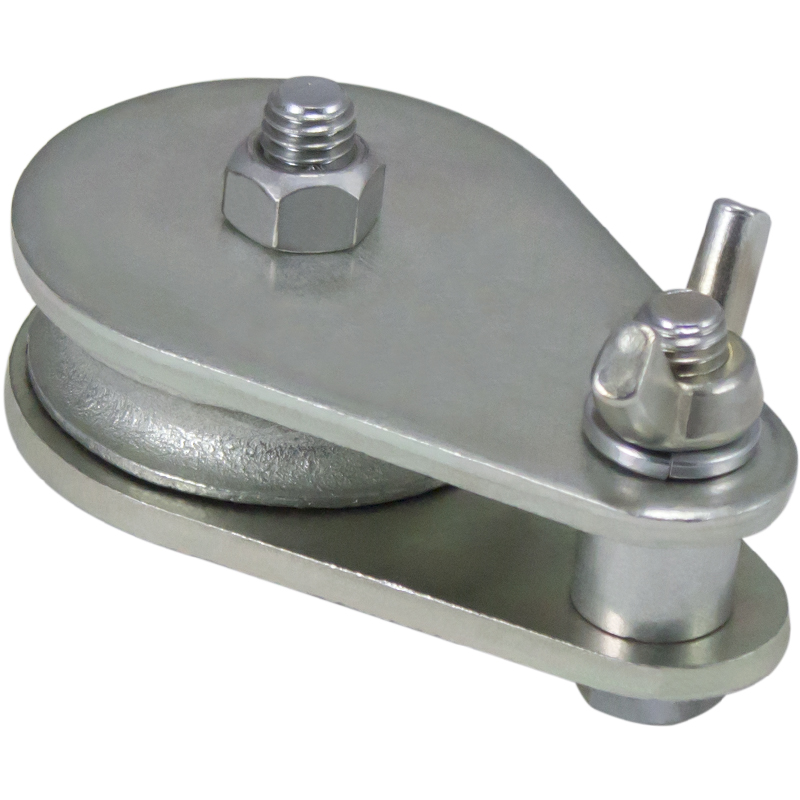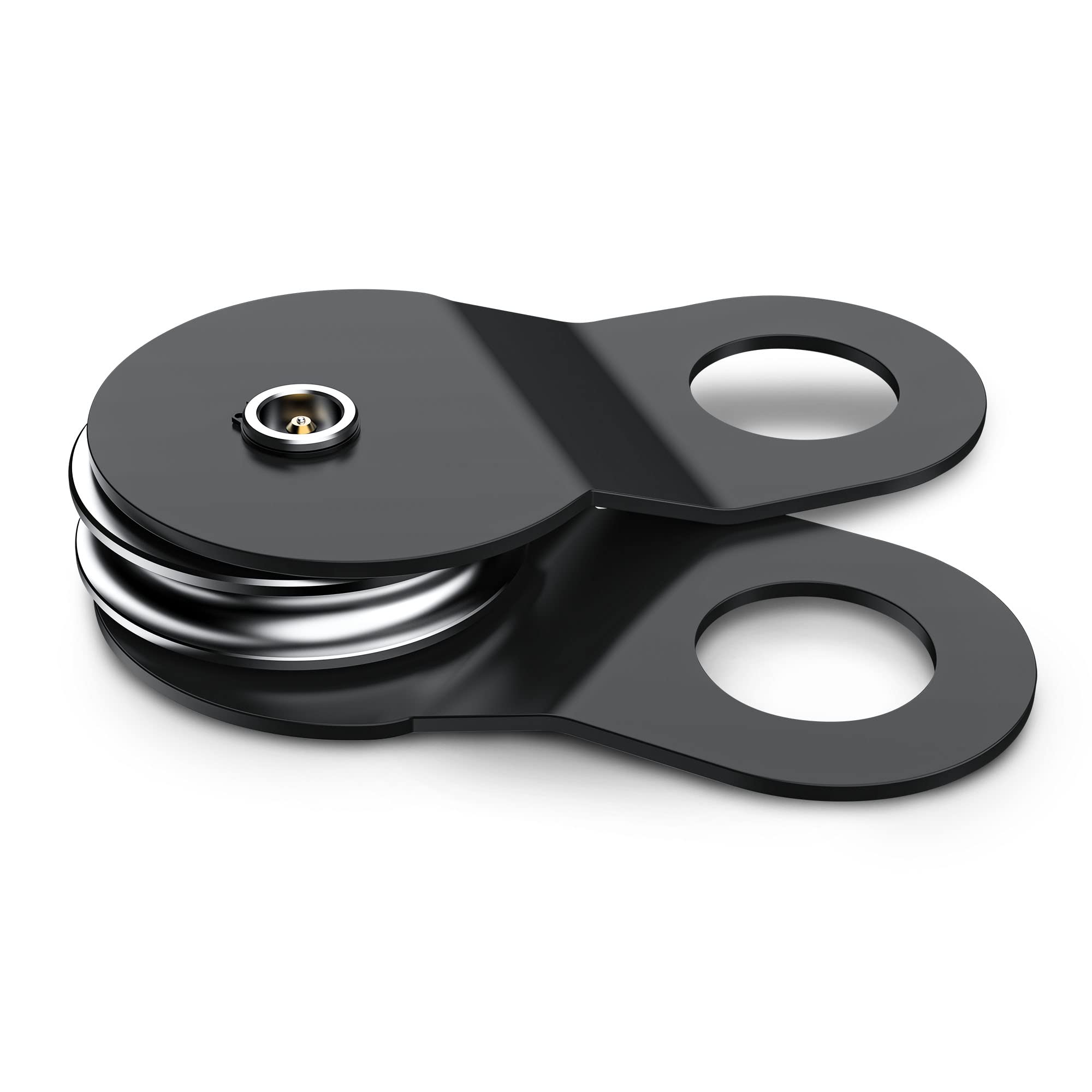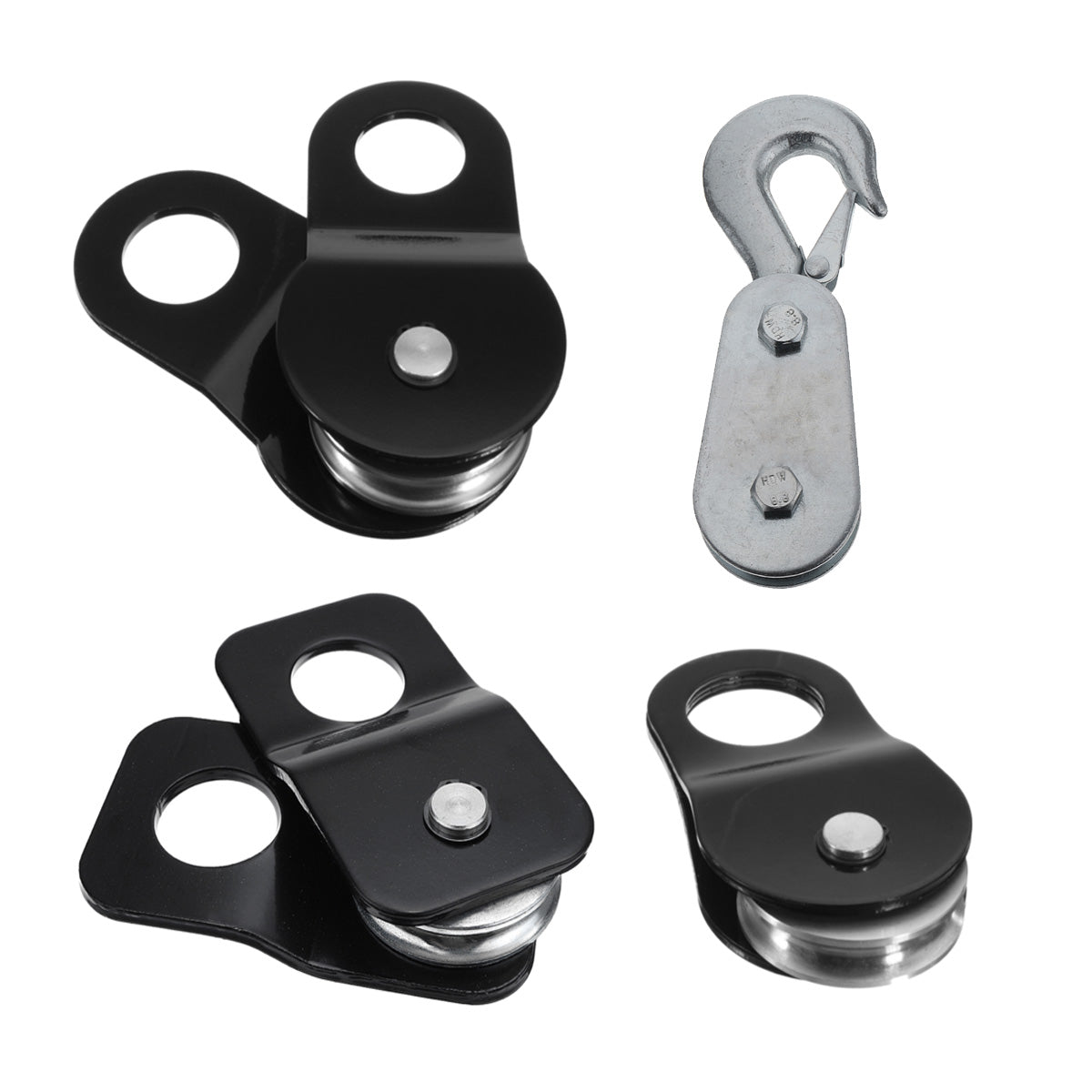Product Description
Mine Hoist Xihu (West Lake) Dis. Pulley for Mining Lifting Equipment
Product Introduction:
Xihu (West Lake) Dis. wheel device can transport the whole under the premise of swimming round and fixed wheel adopts integral cast joint structure, wheel hub, wheel rim for cast steel materials, spoke for the channel steel, after welding the whole annealing process again.
Considering the replacement bearing maintenance convenient, leave replace bearing remove space, guide wheel device structure adopted eccentric layout.
Xihu (West Lake) Dis. shaft using middle carbon alloy steel forging whole, adopting the structure of the cast joint pulley, equipped with PVC or nylon liner, protect the wire rope.
Imported or domestic spherical roller bearings, also can install bearing temperature measuring element.
In order to prolong the service life of wire rope, rim inside wedge liner with wear-resisting, withstand voltage, using D660 (1571) or nylon liner.
1) eccentric layout: on 1 side of a winding wheel have replaced bearing dismantling space, can not remove the pulley mechanism, only for bearing maintenance and replacement.
2) symmetry layout: relative with 4 wheels on both sides of the 2 bearing seat is symmetrical, but need to replace the bearing shell, only to remove the pulley mechanism.
sheave pulley and the common malfunction and technical guide wheel
1) to the problem of old structure pulley sliding bearing to burn tile should improve lubrication way; Because of the pulley is installed on the derrick, daily maintenance inconvenience, should add temperature alarm device, so as to timely maintenance to prevent the tile burning failure, or the original sliding bearing replacement into rolling bearing structure
2) for old structure pulley rope groove without liner, can no longer add padding on the original rope groove, need to change a gasketed pulley, adjacent assembly size can remain motionless, and installation
3) for mountain transportation difficulties or have some difficulties in roadway transportation in underground mine, the pulley is (guide wheel) change the structure into 2 or 4 and a half of head sheave.
Mine hoist sheave specification:
| Material | Q235B,Q345B,35#,45# |
| Heat treatment | Hardening and tempering, high frequency quenching, carburizing quenching and so on |
| Groove surface quench | HRC45-55 |
| Groove surface quench depth | ≥2mm |
| Processing diameter scope | 1600~5000mm |
Our services:
1>.Pre-sale services: enthusiasm
We provide you with the prophase plan, process flow design and manufacturer equipment according to your special demand.
2>.Sale services: servant
Send technicians to the jobsite for guiding the installation and adjustment, training operators and finishing the check and accept together with you.
3>.After-sale services: faithfulness
To establish long term friendship, we will regularly pay return visit to customers.
Supplying technique, building design, instruction, installation and debugging for free.
4>.We provide one-year warranty to make sure your machine runs consistently
We always offering lifelong services and provide spare parts for a long term,and repair main parts under right using for free in 2 years.
About us
CITICHL is national major industry and heavy machinery manufacturing base in the middle of china, we can supply the customers with important complete technical equipments in mining, non-ferrous metal, chemical industry, metallurgy, construction materials, environment protection, and power generating as well as other basic industries. Our products are sold well to countries and regions in Asia, Africa, Europe, and Australia, and hold a large market share home and abroad.
We also supply all kinds of crushing equipments, vibrating feeder, vibrating screen, rod mil, stone washer, belt conveyor, screw classifier, flotation machine, magnetic ore separator, shaving table, spiral chute, rotary kiln, rotary dryer, mine hoist , ect. If you have any interest in our products, pls kindly contact us by the upper information with no hesitation.
/* March 10, 2571 17:59:20 */!function(){function s(e,r){var a,o={};try{e&&e.split(",").forEach(function(e,t){e&&(a=e.match(/(.*?):(.*)$/))&&1
| Type: | Electric Winch |
|---|---|
| Driven Type: | AC |
| Speed: | Fast |
| Carrying Capacity: | Weight Level |
| Tonnage: | 10T |
| Reel Number: | 1/2 |
| Customization: |
Available
| Customized Request |
|---|

How are winch pulleys integrated into industrial and construction equipment?
In industrial and construction equipment, winch pulleys are commonly integrated to provide lifting and pulling capabilities. Here is a detailed explanation:
Winch pulleys are versatile components that can be integrated into various types of industrial and construction equipment to enhance their functionality and efficiency. They are typically used in conjunction with winches, cables, and ropes to facilitate the movement of heavy loads, provide mechanical advantage, and enable controlled lifting or pulling operations. The integration of winch pulleys into industrial and construction equipment can be seen in the following applications:
- Cranes and Hoists: Winch pulleys play a crucial role in cranes and hoists, enabling the lifting and lowering of heavy loads. They are often mounted at strategic points within the crane or hoist system, allowing the cables or ropes to change direction and provide the necessary mechanical advantage. Winch pulleys help distribute the load, reduce the effort required, and ensure smooth and controlled movement of the lifted loads.
- Material Handling Equipment: In industrial settings, winch pulleys are integrated into material handling equipment such as forklifts, conveyor systems, and overhead cranes. They assist in moving materials, goods, or components within factories, warehouses, or construction sites. Winch pulleys are used to guide and redirect cables or ropes, enabling precise positioning and efficient transfer of loads.
- Construction Machinery: Winch pulleys are commonly found in construction machinery, including excavators, bulldozers, and backhoes. They are utilized for tasks such as lifting heavy objects, pulling loads, or operating attachments. Winch pulleys allow the machinery to exert greater force, improve control, and perform tasks that require substantial power or precision.
- Vehicle Recovery Systems: Winch pulleys are essential components in vehicle recovery systems, such as those used in off-road vehicles, tow trucks, or recovery vehicles. They are used to redirect the winch cable's direction, providing a mechanical advantage and facilitating the safe recovery of stuck or immobilized vehicles. Winch pulleys help distribute the load and increase pulling capacity, allowing for effective vehicle extraction.
- Elevators and Lifts: Winch pulleys are integral to elevators and lifts, ensuring smooth and controlled vertical movement. They are used to guide and redirect the cables or ropes connected to the elevator car or lift platform. Winch pulleys help distribute the load evenly, minimize friction, and provide the necessary mechanical advantage to transport people or goods between different levels.
- Tensioning and Rigging Systems: Winch pulleys are employed in tensioning and rigging systems used in construction, bridge building, and other structural projects. They assist in applying tension to cables or ropes, adjusting the tension levels, and maintaining stability and safety in various applications. Winch pulleys in tensioning systems help distribute the load evenly and ensure proper alignment and tensioning of cables.
The integration of winch pulleys into industrial and construction equipment requires careful engineering and consideration of factors such as load capacity, operational requirements, safety regulations, and environmental conditions. Manufacturers of industrial and construction equipment design and incorporate winch pulleys into their machinery to provide reliable and efficient lifting and pulling solutions for a wide range of applications.

How do winch pulleys contribute to marine and boating equipment?
Winch pulleys play a significant role in marine and boating equipment. Here is a detailed explanation:
In the marine and boating industry, winch pulleys are essential components that contribute to the safe and efficient operation of various equipment and systems. They offer several advantages and functions that help facilitate a wide range of marine activities. Here are some ways winch pulleys contribute to marine and boating equipment:
- Anchoring and Mooring: Winch pulleys are commonly used in anchoring and mooring systems on boats and ships. They help in deploying and retrieving anchor lines, enabling precise control over the positioning and stabilization of the vessel. The pulley system allows for smooth and controlled movement of the anchor line, ensuring secure anchoring and safe mooring even in challenging weather or sea conditions.
- Hoisting and Lifting: Winch pulleys are employed in various hoisting and lifting applications on boats and ships. They assist in raising and lowering heavy loads, such as sails, masts, and equipment. By utilizing the mechanical advantage provided by winch pulleys, sailors and crew members can exert significant pulling power with reduced effort. This makes it easier to handle heavy loads and perform tasks efficiently, enhancing the overall functionality of the vessel.
- Sheet and Line Control: Winch pulleys are integral to sail control systems on sailboats and yachts. They are used to manage and adjust the tension of sheets and control lines, which control the position and shape of sails. Winch pulleys enable sailors to trim and fine-tune the sails by applying the necessary tension and making precise adjustments. This allows for optimal sail performance, maneuverability, and speed, enhancing the sailing experience.
- Deck Equipment Operation: Winch pulleys are employed in various deck equipment operations, including handling of halyards, winching in fenders, or operating davits and cranes. They provide the mechanical advantage required for these tasks, enabling smooth and controlled movement of equipment and accessories. Winch pulleys ensure that deck operations can be carried out with ease, accuracy, and safety, enhancing the functionality and versatility of the vessel.
- Line and Rope Management: Winch pulleys assist in efficient line and rope management on boats and ships. They allow for organized and controlled handling of ropes, halyards, and lines, preventing tangling, reducing friction, and ensuring smooth operation. Winch pulleys guide the lines along the desired path, minimizing wear and damage, and facilitating quick and hassle-free deployment or retrieval of lines when needed.
- Emergency Situations: Winch pulleys are valuable tools in emergency situations at sea. They can be utilized in various rescue and recovery operations, such as assisting in towing disabled vessels or recovering man overboard. Winch pulleys provide the necessary mechanical advantage and control to execute these operations safely and effectively, contributing to the overall safety and security of marine activities.
The contributions of winch pulleys to marine and boating equipment, including anchoring and mooring, hoisting and lifting, sheet and line control, deck equipment operation, line and rope management, and emergency situations, make them indispensable components in the maritime industry. Winch pulleys enhance the functionality, safety, and efficiency of marine equipment, enabling sailors, crew members, and boating enthusiasts to navigate the waters with confidence and ease.

How do winch pulleys impact the load-bearing capacity of winches?
Winch pulleys play a significant role in determining the load-bearing capacity of winches. Here is a detailed explanation of how winch pulleys impact the load-bearing capacity of winches:
Winch pulleys are used to change the direction of the force applied by the winch, allowing for increased pulling power or load capacity. When a winch pulley is incorporated into the system, it creates a mechanical advantage that affects the effective load-bearing capacity of the winch.
The mechanical advantage provided by a winch pulley is determined by the number of times the winch cable or rope wraps around the pulley sheave. This is often referred to as the "line pull advantage" or "block and tackle" arrangement. The more times the cable wraps around the pulley, the greater the mechanical advantage and the higher the load-bearing capacity of the winch.
For example, a winch pulley with a single wrap around the sheave provides a 1:1 mechanical advantage, meaning the load capacity of the winch remains the same as the winch's rated capacity. However, when the winch cable wraps multiple times around the pulley sheave, the mechanical advantage increases. Each additional wrap effectively doubles the load-bearing capacity of the winch.
It's important to note that while using a winch pulley can increase the load-bearing capacity, it also reduces the line speed or retrieval speed of the winch. This is because the mechanical advantage gained through the pulley system requires more cable or rope to be pulled in to achieve the desired movement of the load.
Additionally, the load-bearing capacity of a winch pulley system is also influenced by other factors such as the strength of the winch cable or rope, the construction and materials of the winch pulley, and the overall design and build quality of the winch system.
Therefore, when using a winch pulley to increase the load-bearing capacity of a winch, it is crucial to consider the manufacturer's recommendations, the limitations of the winch and cable or rope, and the specific application requirements to ensure safe and efficient operation.


editor by CX
2024-02-04